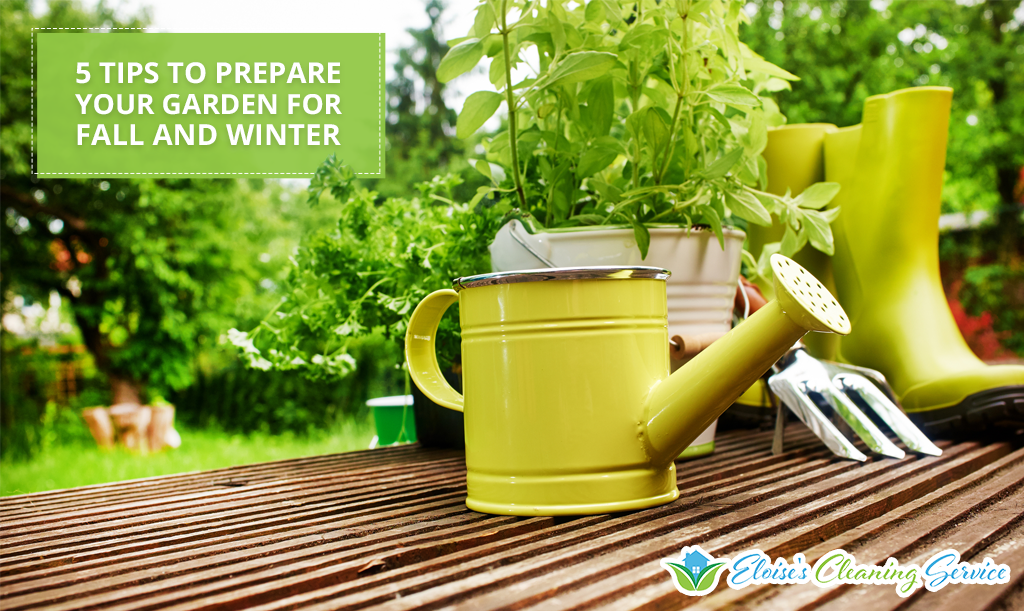As the cool breeze sweeps in and the vibrant colors of fall emerge, it’s a gentle reminder that a new season is upon us. Fall brings with it cozy evenings wrapped in blankets, indulging in warm desserts, and the irresistible aroma of pumpkin spice wafting through the air. For those with a green thumb, it also signals a time of important garden preparations.
Whether you’re a gardening enthusiast seeking to guide your garden through another season or a seasoned professional seeking fresh insights, these tips are for you. In this article, we’ll share five invaluable tips to help you prepare your garden for the upcoming fall and winter seasons.
So, while you engage in regular house cleaning, don’t forget to spare some time for your beloved garden. Let’s dive in and ensure your garden thrives in the changing seasons ahead!
Fall Tips
1. Prepare a new garden bed for spring
It’s never too early to start thinking about the following spring, and preparing a new garden bed in the fall will bring you great results as soon as the weather is warm again. What you need to do is take laying down a thick cardboard/newspaper layer, topped off with a 5-inch thick layer of compost, then adding a layer of woodchip mulch of about 4 inches thick. The idea is to let this new bed sit over the winter so it’s ready to plant by spring.
While you can accomplish pretty much the same results applying only the mulch over the cardboard or newspaper, it’s better if you already have access to enough compost to add it to the new bed. The same goes for preparing raised beds for winter.
2. Pull out dead plants and remove diseased ones
Any plant that didn’t survive the season has to be removed, and while doing so might be sad considering you planted them only a few months ago, they can still be useful if you add them to your compost pile. It all goes back to the earth! Another important step is to trim back your perennials that are dormant, cutting the dead stems if they still have green leaves.
On the other hand, it’s important that you remove all diseased plants from your garden before the disease can spread to other plants by overwintering, even if you think they won’t survive the cold. This is a very common mistake of novice or amateur gardeners, so now you know how to avoid it! Dispose of them by burning or taking them to a landfill in a bag, because composting them might cause the disease to be passed back into your garden.
3. Protect young trees from wind and critters
Fall and winter is a season full of dangers for recently planted young trees. Fall brings along fast winds that can knock your sapling back and forth and thus break their roots, so it’s a good idea to tie them to a strong stake firmly planted in the ground. If you’re going to use wire to tie your tree, remember to cover the wire with pieces from an old hose to prevent it from cutting into the bark.
Speaking of barks; the colder seasons also bring some critters that love to munch on the bark of your trees, like the rabbit, so using some vinyl tree wrap around your sapling will protect it from them. You can also use a special breathable fabric if you want the tree to heal an already existing wound.
Winter Tips
If you did all your fall preparations right, that means there isn’t much to do in the garden, plant-wise. However, there are a couple of things you can take care of in the meantime.
1. Repair your garden structures
The reduced foliage and trimmed shrubs mean that you now have more moving space to do some maintenance work on your tool shed, greenhouse, fences, and summer house if you have them. It’s the time to repair or replace damaged timber, or parts that are suffering from pest infestations or weather damage. That way they’ll look gorgeous once the sun shines again when spring arrives. If you have a summerhouse, you can have it cleaned as well.
2. Clean and store your gardening tools
While some of them, like clippers, are always useful to have at hand, you won’t have too much use for the rest until the next gardening season. If you already finished preparing for autumn, this a good time to clean, treat, and store all your tools in the shed, covering them to prevent humidity do some damage. Making some racks to hold them is also a good idea if you don’t have a proper space for each one in the shed to avoid cluttering.

